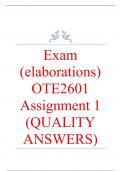Exam (elaborations)
Test Bank Lehne's Pharmacology for Nursing Care, 10th Edition by Jacqueline Burchum, Laura Rosenthal Chapter 1-110|Complete Test Bank Lehne's Pharmacology for Nursing Care, 10th Edition by Jacqueline Burchum, Laura Rosenthal Chapter 1-110|Complet
- Course
- Institution
Test Bank Lehne's Pharmacology for Nursing Care, 10th Edition by Jacqueline Burchum, Laura Rosenthal Chapter 1-110|Complete Test Bank Lehne's Pharmacology for Nursing Care, 10th Edition by Jacqueline Burchum, Laura Rosenthal Chapter 1-110|Complete
[Show more]












